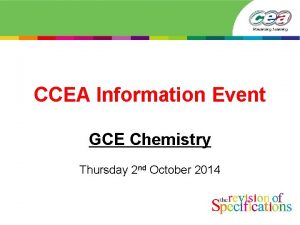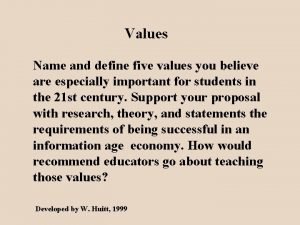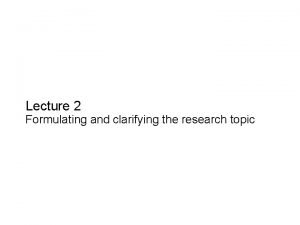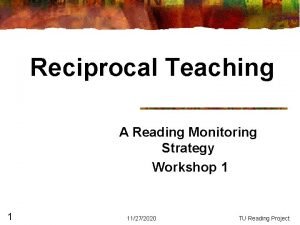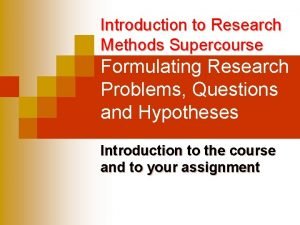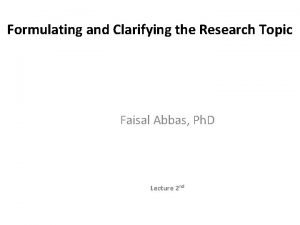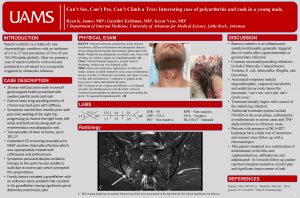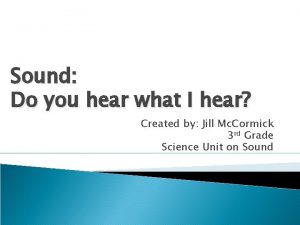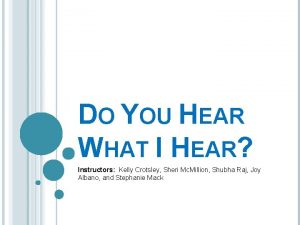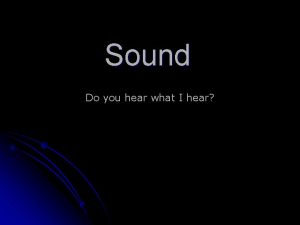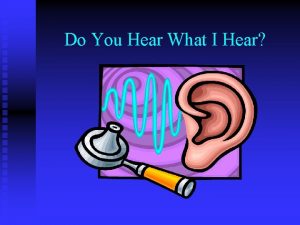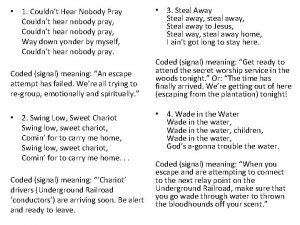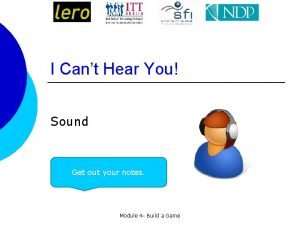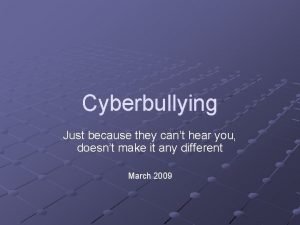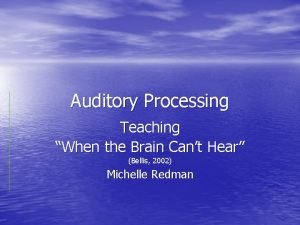Clarifying CLARIFICATION IN CONVERSATION If we cant hear



























- Slides: 27

Clarifying

CLARIFICATION • IN CONVERSATION: - If we can’t hear, we ask them to repeat - If we can’t understand, we ask them to explain what they mean

CLARIFICATION • IN A RECORDED MESSAGE: - If you find there are parts of a speech you don’t understand because: - the speaker is speaking quickly - the ideas are difficult - you don’t see the connection between different parts DON’T PANIC

CLARIFICATION • DEVELOP A SYSTEM - During the listening session to mark problem items - use circles - question marks - asterisks *

CLARIFICATION • DEVELOP A SYSTEM - After the recording is finished - make notes of your questions in the margin - minor items, e. g. spelling - major items, e. g. comprehension

CLARIFICATION • WAYS TO GET THINGS CLARIFIED - Asking your classmates - Asking your teacher - Looking them up in your textbook - Doing research in a library or online

Clarifying expressions • Not hearing what was said I didn’t catch the word used for… (X) I didn’t hear what was said about… (X) I didn’t catch what was said just before… (X) What was the term used for… (X)

Clarifying expressions • Not understanding what was said I didn’t get what was said about … (X) I haven’t quite grasped what was said about (X) I’m not really clear about (X). Could you give us an example?

Clarifying expressions • Not seeing the connection I don’t quite see how (X) relates to (Y) I can’t really see the link between (X) and (Y) I don’t see why (X) is relevant to (Y) Combine Clarifying with Monitoring

Using your notes to ask questions and make comments • REASONS: - You didn’t understand something the speaker said - You would like additional information about some point of the lecture - You want to contribute additional information about a point of the lecture - You disagree with something the speaker said and want to discuss it - You agree with something the speaker said and want to express your support

To increase your knowledge and understanding of the topic • It’s a good idea to take notes on - other students’ questions and comments - the lecturer’s response - any class discussion that follows

Using handouts to help you take notes • Handouts - give you a preview of the ideas to be discussed - help you understand how the lecture is organised - provide material to study later - include: - charts or graphs - outline - further reading

Using handouts to help you take notes • How to take notes on handouts - Highlight or circle parts of the handout the lecturer discusses - Mark information you don’t understand want to ask questions about - Write comments

Responding

Responding v Relating the topic to your knowledge & personal experience v Forming your own opinions on the topic

Responding Ø Asking yourself questions such as: _ Do I accept that what is being said is true and relevant? _ Can I think of other examples that support, or don’t support what is being said? _ Do you think that other people’s opinions are reasonable?

Thinking critically about the topic ØEvaluate what other people say ØCompare it with your own knowledge and experience _ argue, both, for and against what is being said _ you still strongly hold your original opinion _ you have changed your mind

Sharing your opinion ØAn issue becomes important if you share your own opinions about it

Sharing your opinion Ø Factors influencing your ideas _ age _ educational experience _ cultural background

Supporting your opinion Ø You show you have thought about the topic in depth and can develop your argument ØSupport for your ideas consists of: _ explanations _ examples _ two or three pieces of supporting information

Supporting your opinion ØTransitional Phrases: introducing and linking first/ first of all/ first and foremost/ to begin with in addition/ additionally/ secondly/ furthermore/ moreover/ also/ then/ as well finally/ and last but not least

Pre-Listening Tasks Marine and Hydrokinetic Ernegy

Task 1 a) Marine and hydrokinetic energy technologies convert the energy of waves, tides, and river and ocean currents into electricity. b) By extracting power from moving water. For example, a buoy can harness energy from the vertical rise and fall of ocean waves, as well as back-and-forth and side-to-side movements. Currents and tides can also spin a turbine in various directions as water moves through an ocean power device, generating electricity.

Task 2 Wave Energy Tidal Energy • 2 • 3 • 4 • 1 • 5 • 6

Task 3 2. Point absorber 1. Tidal stream generators 3. Overtopping technologies 5. Barrage technology

Vocabulary

Video Watching Watch the video about marine and kinetic energy using the subtitles in English https: //www. youtube. com/watch? v=ir 4 Xng. Hco h. M As you listen take notes. Use telegraphic language, conventional symbols and abbreviations. Write down your notes in one of the formats you already know.
 I heard myself proclaimed
I heard myself proclaimed If you don't measure it you can't manage it
If you don't measure it you can't manage it If you don't measure it you can't manage it
If you don't measure it you can't manage it Hear ye definition
Hear ye definition He who has ears let him hear
He who has ears let him hear Expressions of congratulation
Expressions of congratulation Clarification questions examples
Clarification questions examples Bid clarification meeting
Bid clarification meeting Ccea gce english
Ccea gce english Action learning approach in values education
Action learning approach in values education Task specific clarification myp
Task specific clarification myp Bid clarification meeting
Bid clarification meeting Teknik clarification dalam konseling
Teknik clarification dalam konseling Bid clarification meeting
Bid clarification meeting Clarifying roles and responsibilities
Clarifying roles and responsibilities Formulating and clarifying the research topic
Formulating and clarifying the research topic Spellers clarifying phrase
Spellers clarifying phrase Formulating and clarifying the research topic
Formulating and clarifying the research topic Clarifying for comprehension dialogue
Clarifying for comprehension dialogue What is purposeful listening
What is purposeful listening Formulating and clarifying the research topic
Formulating and clarifying the research topic Formulating and clarifying the research topic
Formulating and clarifying the research topic Formulating and clarifying the research topic
Formulating and clarifying the research topic Monitor and clarify
Monitor and clarify Formulating and clarifying the research topic
Formulating and clarifying the research topic Secondary research question
Secondary research question Eric ribbens
Eric ribbens Roofing parapet wall
Roofing parapet wall








